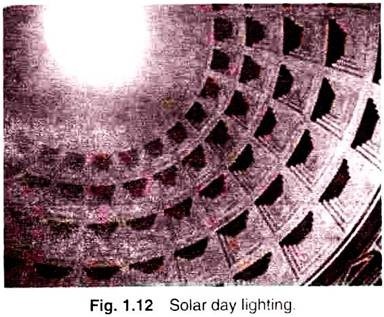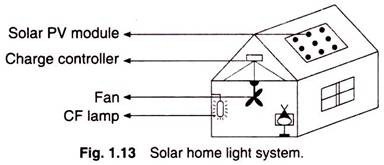ADVERTISEMENTS:
Rivers flow from high to low altitudes and act as ‘means’ of erosion, transportation, and deposition of various particles.
1. Erosion:
Erosion by any river is very important aspect for mankind. Rate of erosion is higher in mountains as compared to that in plains. Rivers carry the particles/ debris formed by weathering and deposit it at another place. The particles that rivers carry are stones, rocks, sand particles etc., which help in erosional process.
According to William Morris Davis the cycle of erosion is, “the period of time during which an uplifted land mass undergoes its transformation by the process of land sculpture ending into a low featureless plain”.
ADVERTISEMENTS:
Erosion may be divided into two parts:
1. Vertical Erosion:
This is also known as downward (cutt) erosion, which results in deepening of valley. This, erosional activity is dominantly vertical. Rivers flow from mountains to low slopes, eroding the bed rocks vertically. Because the flow is fast and slope (gradient) are steep, this process goes on, till the river reaches its mouth and results in formation of ‘V’ shaped valleys.
2. Lateral Erosion:
ADVERTISEMENTS:
This is a sideway erosional process. It starts when river enters from mountains to plains. Speed of water/flow decreases and river starts ‘sideway’ erosion and further it leads to widening of valley.
Factors Controlling Erosion:
(i) Velocity of Running Water:
ADVERTISEMENTS:
Process of erosion depends upon the velocity of river. If the gradient is steep, velocity of river will be higher which leads to more erosion. In plains, the velocity of river is low, erosion is also comparatively less.
There is a law about erosional capacity of running water, if the velocity of river is doubled or multiplied by two its capacity of carrying the material rises by 64 times of its original capacity. This is known as ‘Gilbert’s sixth power law’. Erosion Capacity increases during flooding while it lies low in dry patch of weather.
(ii) Volume of Water in River:
Higher the volume of water in river, more will be erosion. As the volume increases the presence of rocks, stones, soil particles, debris etc. also rises. Higher volume results in deepening of river beds and broadening of banks. All this leads to widening of valley by eroding river bed and walls or sides of river.
(iii) Load of River:
If the amount of rocks, stones, soil particles is high in rivers, it will accelerate the process of erosion and friction.
(iv) Nature of Rocks:
Erosion process on limestone’s and sand stones rocks is faster as these are soft rocks. On the other hand, the erosion process on Granite and Basalt is slow and tougher comparatively, these being hard rocks. Rivers carry out the process of erosion and friction on the basis of load, gradient and type of rocks.
2. Transportation:
River carries rocks, stones, soil particles etc. from one place to another. This process of carrying materials is known as transportation. Basically it is carried out in middle course of a river.
Rivers carry out debris in different ways:
(i) Traction:
Large material such as boulders are rolled and pushed along the river bed by the force of river water.
(ii) Solution:
Dissolved material are also carried by a river. This happens often in areas where the lime stone is dissolved by slightly acidic water. Some chemicals and salt also dissolve in river waters.
(iii) Load in Suspension/Suspended Load:
When materials made of very fine particles such as clay and silt is lifted as the result of turbulence and transported by river. Faster flowing turbulent river carry more suspended materials, that is why rivers appear muddy. Transportation of fine material is faster than coarse material.
3. Deposition:
This process begins when gradients are low and velocity of river water decreases. At this stage deposition of materials carried by river take place, which helps in leveling of low lying areas. The process of erosion and deposition is completed at this stage.
Fast flowing rivers carry the material for longer time and distance. On the other hand, rivers which flow slow, start the deposition work on their way. Sometimes when rivers change their directions, deposition process begins.
Parts of River and Cycle of Erosion:
The erosion power of river varies from source to mouth. During this process various landforms are formed.
Diagram showing all the parts of river is known as ‘Long Profile’:



